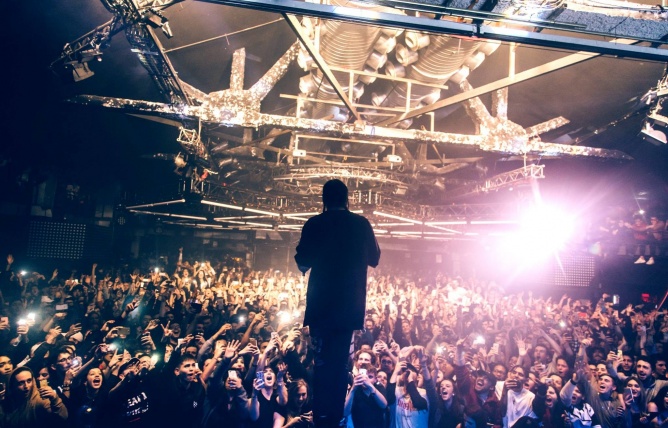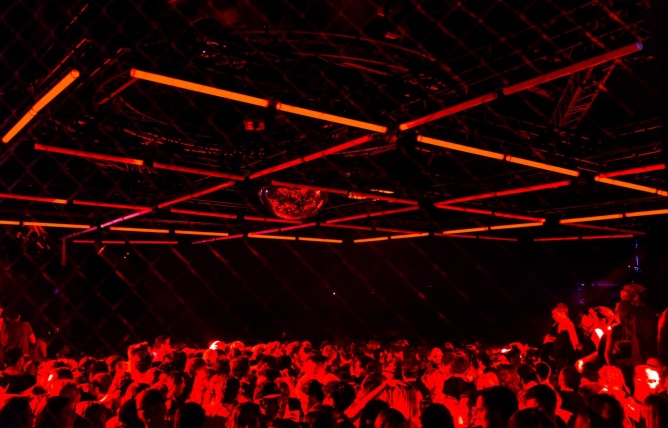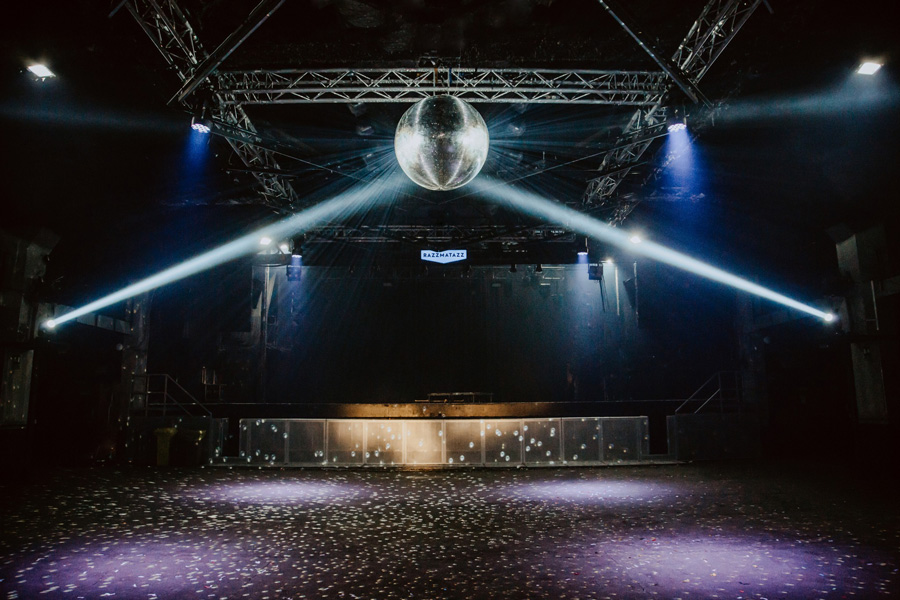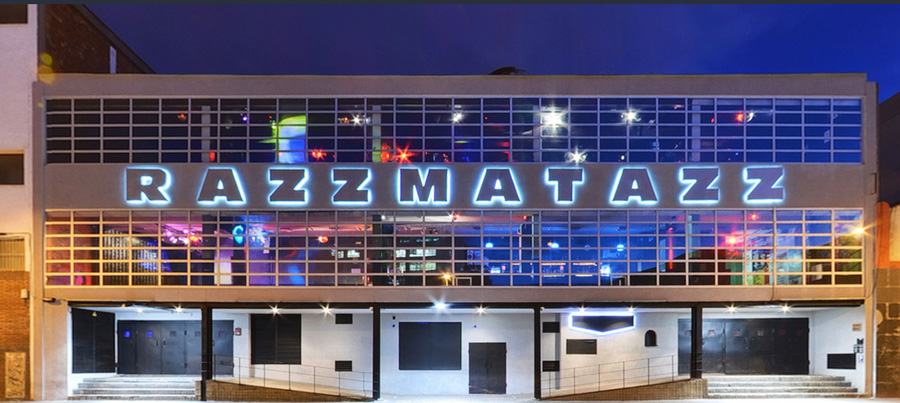
The Razzmatazz, the biggest nightclub in Spain, has five rooms each with its own style: rap, techno, disco, and many other styles of music, the largest room the “Sala 1” has a capacity of 2000. Be it for theme evenings, concerts or “corporate” events, the eclectic and spacious venue can host it all.
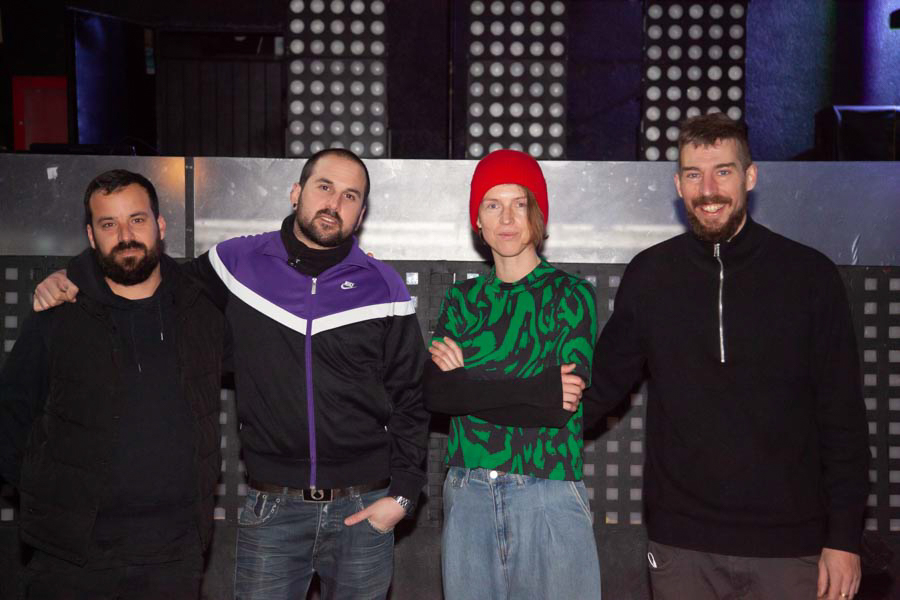
Xavier Prats, Technical Director at the Razzmatazz, pragmatic, confirms that to be that flexible “The team has to manage the production, entertainment, security, the bar and of course the technical aspects”.
In line with this philosophy, during the Covid years, the crew was busy checking their entire kit and updating parts of it, modernizing it. For Xavi and Magda, the lighting director, to host prestigious entertainers one needs top-of-the-line equipment. Hence, along came the Robe MegaPointe, Tetra 2, Smarty Hybrid Elation, and IVL Square Minuit Une, controled by a brand new grandMA3, joining the hefty L-Acoustics sound system.
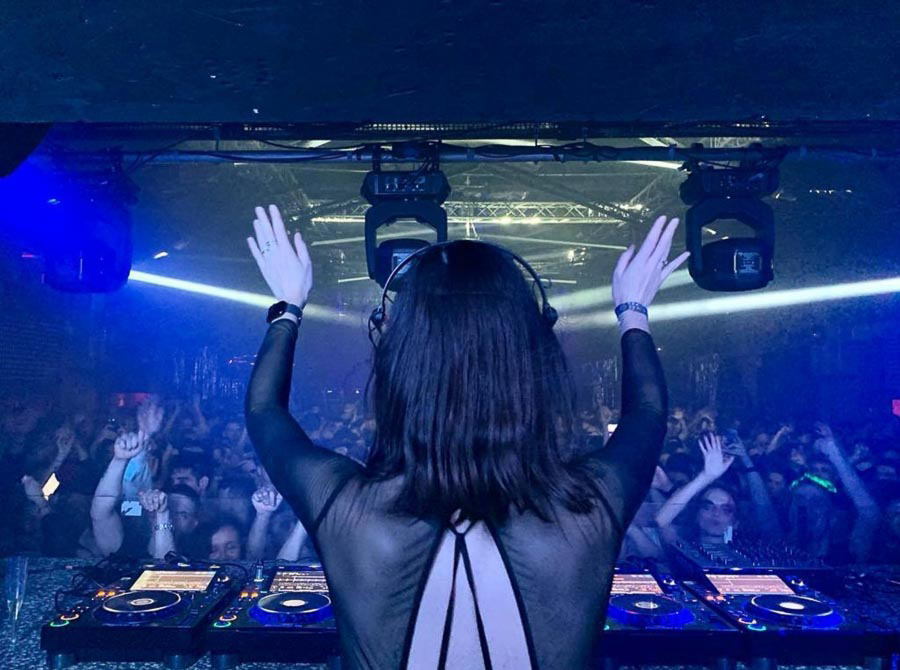
Since 2000 the nightclub has evolved well and its success is proof of it, and it is quite visible that the neighborhood is changing also. The old abandoned industrial buildings are progressively changing into, or replaced by, nurseries, luxury apartments, or brand new co-working spaces. That isn’t a problem, “the neighborhood changes and we adapt” says Xavi walking in a hallway as we tour the venue.
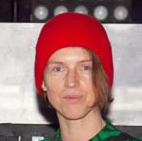
Magda Kozlowska started at the Razzmatazz as a freelance for Light Lumina, a longtime technical provider for the Razzmatazz. Over the years the nightclub has come to own its equipment.
She then joined the team full-time and evolved to become the manager of the lighting department.
Despite some long days, doing the installation and the technical support, she has been able to make it work out with her personal life, always being onsite for the key parts of the events.
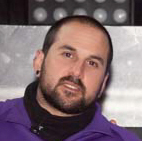
Xavier Prats began at the Razzmatazz in 2008 as a sound engineer and at times as a DJ. Later he managed the technicians in 2012, then on to Technical Director two years after, overseeing lighting, video, and sound.
Self-taught and having a passion for the technical side he is very attentive to understanding and mastering the use of the entire equipment, and has an inclusive personality.
Logically the tour starts with “Sala 1”, the largest space in the venue. It can host a large amount of “clubbers” or major international stars in a concert-type setup.
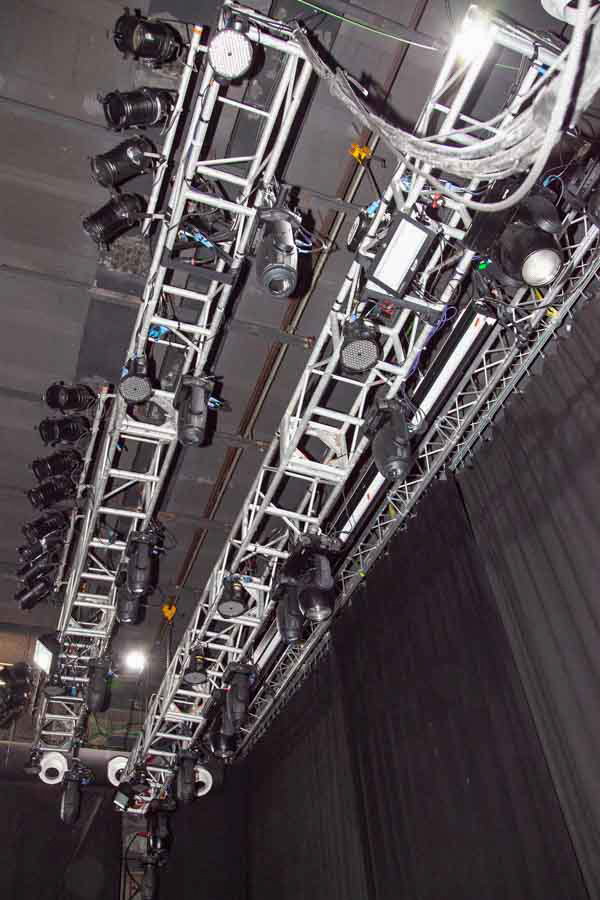
Xavier Prats : When bands come here they need a powerful kit, easy to run and with top-notch equipment.
Magda Kozlowska : Our politics are also to always supply the equipment that is listed on our “rider” (technical specifications). If, for example, a MegaPointe stops working we can replace it immediately. It’s one of the things that has built the confidence that people have in the Razzmatazz.
SLU : How did you decide on what equipment would make up your basic onsite kit?
Magda Kozlowska : The rider includes 12 x RobePointe and some GLP Impression 120 washes. From our experience and research, we found that these fixtures make for a good basis for most Lds.
They can easily match them with fixtures to be floor mounted or rigged to our trusses. There are ETC Source 4 Jr profiles for the front lighting.
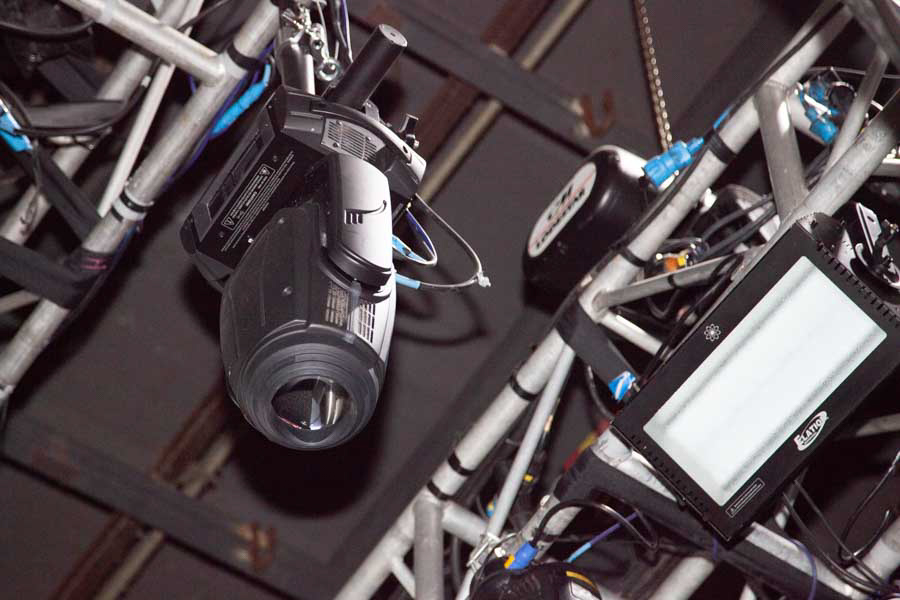
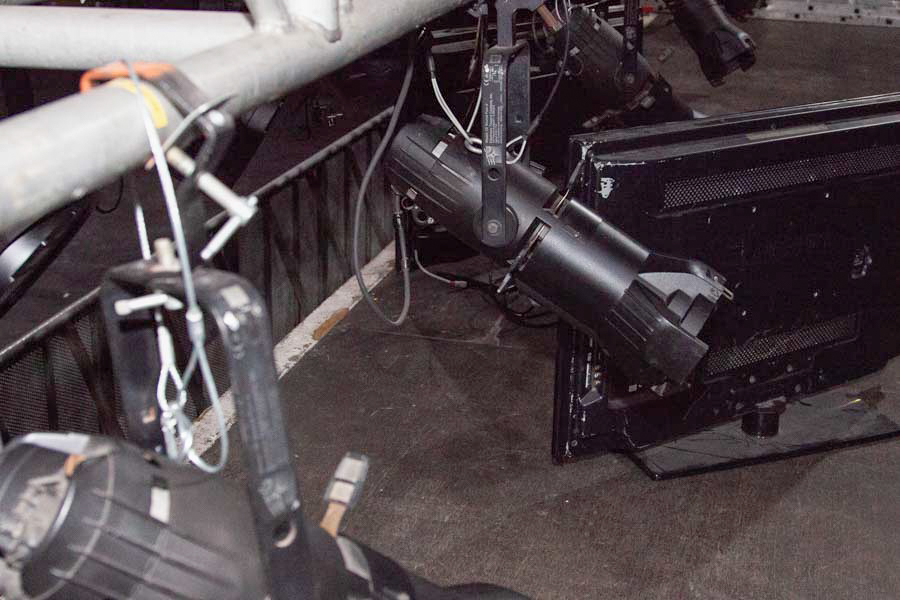
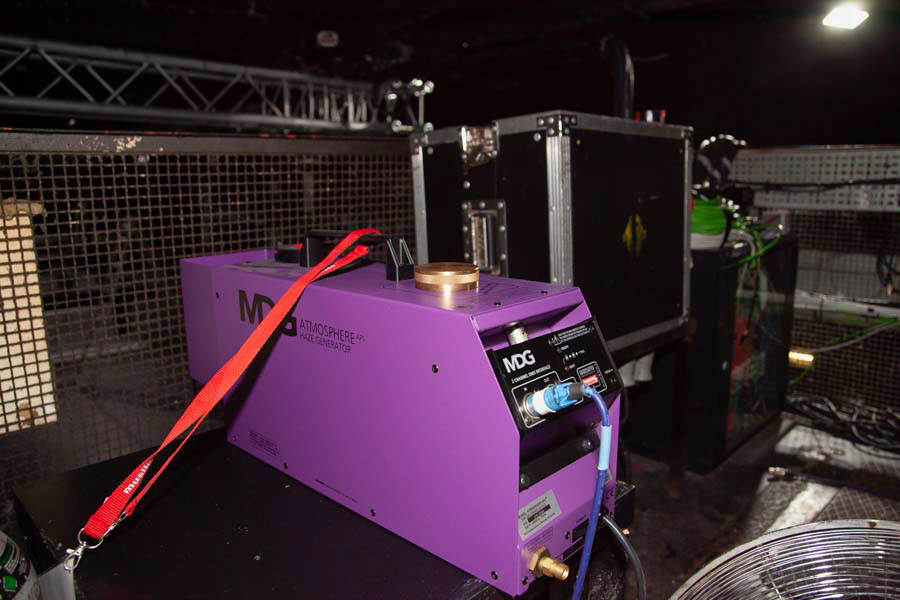
We have changed our old smoke machine for the MDG Atmosphere to keep the equipment as clean as possible, which we are very satisfied with. There is one close to the stage and another on the dancefloor, just above the DJ booth.
The central trussing grid is usually reserved for the nightclub/dance-floor area, it may be used for the concerts, however, it may not be modified.

SLU : I noticed that the DJ booth is located on the same level as the dancefloor
Magda Kozlowska : A few years ago the concept of clubs changed and the DJs turntables moved from the stage to the dancefloor we wanted to keep up with the new concept of being in the middle among the clubbers. It was cool for us to create a very big booth on the dancefloor, it was also quite expensive.
We had to continuously move the equipment from the dancefloor to the stage which was very tiring for the crew. We had to rethink the kit to create a very powerfully lit booth with Elation Cuepix led panels and it is very cool.
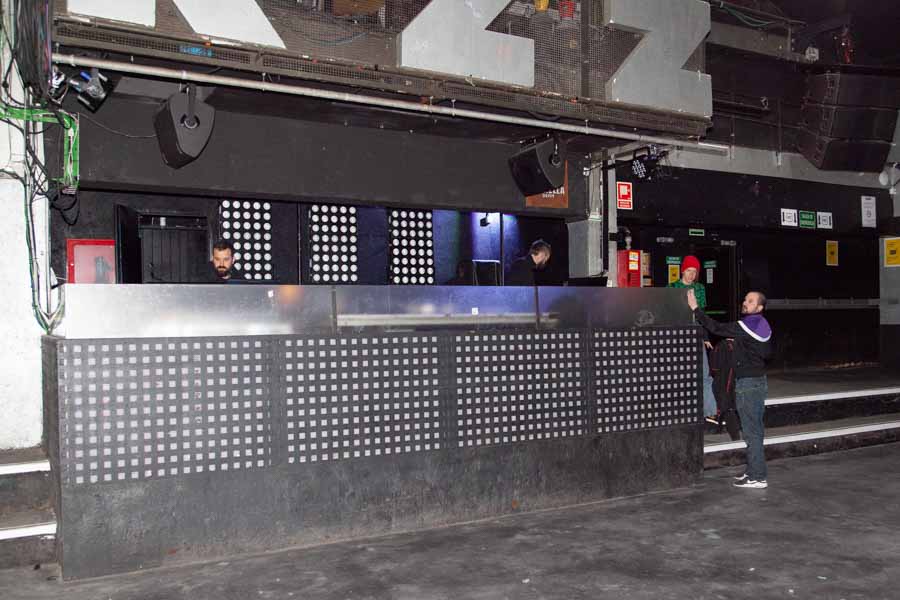
The first nice surprise in the Dancefloor kit: an IVL Square by Minuit Une, the up-and-coming French company, reigns in the middle of the rig.
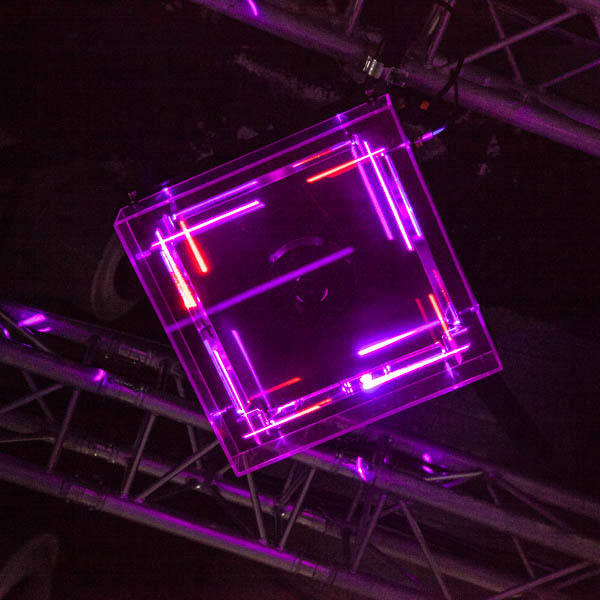
SLU : A laser fixture in a club, the Phenix rises from its ashes
Xavier Prats : Yes, however, we chose it because it isn’t a conventional type of laser. The concept of its mirrors allows the laser to surround the spectators, giving it a whole new look different from the conventional lasers.
Magda Kozlowska : And it also has the advantage of not damaging people’s eyes. We are very happy with it, and personally, I really like it. It is very lightweight and can easily be moved to the DJ booth or the stage.
On the dancefloor, there is a huge pyramid of empty Elation Smarty Hybrid boxes, that reminds me vaguely of a Boxing Day after Christmas celebrations. Shiny new fixtures throughout the dancefloor grid are ready to blast their light output to the beat. The crew has also dry-hired some Martin Atomic Strobes installed in various places.

Magda Kozlowska : It was a lot of technical work, we didn’t have the electrical mains, nor the signal in that spot on the dancefloor to do it quickly, but we really wanted to give the people a special experience.
Xavier Prats : Then after doing some tests, we also ordered 12 x Robe Tetra 2 that we should be receiving next September depending on their availability. We have thought of installing them either three groups of four or maybe four lines of three fixtures on tubes in the central grid.
Magda Kozlowska : That will complete the new dancefloor setup. For the moment we want to invest our time programming the lighting, and then train the operator to know the system and the desk because he will be running the shows for the nightclub, so time is flying…(laughter) We are delighted with this evolution.
Programming for electronic music is quite intense, the music fades in and out at certain times, and the lighting has to be able to follow. It’s what we explain to the kids that come for tryouts, it’s a question of following the music and not necessarily knowing how to create complex effects.
Xavier Prats : It is very important to have a feeling for the music to follow the changes ranging from calm moments and then building to a lighting and musical blast-off. The reputation of the nightclub needs an amazing electro-night ambiance.
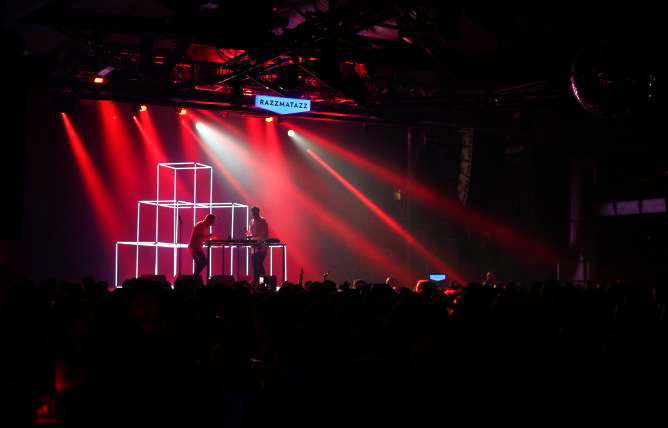
Réseau
SLU : How do you control the entire kit?
Magda Kozlowska : Recently, a few months ago, we went grandMA3.
Xavier Prats : There are three different sources video, sound, and lighting. For this sector, we have chosen the Art-Net protocol with a DMX hub for the lighting fixtures.
Magda Kozlowska : We updated our cabling to CAT6 quite late because of the existing DMX network, however with more and more requests for a protocol network we preferred to put a separate cable dedicated to lighting and not just share one network for all three stations (video, sound, and lighting), like we did.
Son
Xavier Prats : And for the sound, we have 4 CAT6 lines for the DANTE, the Lake, and for the amplified L-Acoustics controllers up on the balcony. We have an L-Acoustics kit installed in each of the three main rooms. In “Sala 1” we replaced the Kudo with the new K3, in the next room we have the Kara system and in the 3rd room “Lolita” we use the A15 system.
The FOH (front-of-house) sound desk in the biggest room is the new Avid S6L-32D and, we just bought another one a month ago for the onstage monitors. We had been using Venue Profiles for the past 14 years. It was time for a change! (laughter) We have a Midas Pro 2 at FOH with an SC48 Avid on monitors in the second room. The third room is fitted with a Midas Pro 1.
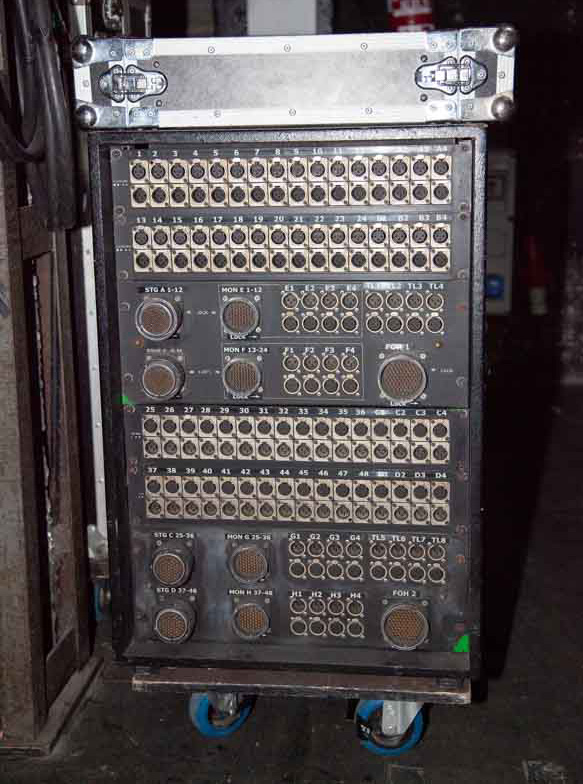
SLU : What does the audience want in sound, quality, and/or a very powerful system?
Xavier Prats : It depends on the type of entertainment. For a concert, they are looking for quality, precision for the instruments and voice(s). For clubbing, they want to “feel” the music, literally, hence a lot of acoustic pressure in the low end! It’s the bass that gets the people up and on the dancefloor.
SLU : So, there isn’t a “perfect recipe
Xavier Prats : Never! (laughter) There are always some people who love the sound and who don’t. As a solution, we have, different sound engineers for different types of events. The sound must be true to the types of music in the rooms, and the different setups should be comfortable for the musicians and/or DJs.
For the DJs, we have a classic monitor system of two SB18s and three Karas, and some side fills. The two types can be moved to the DJ booth or on stage depending on the request. The DJs are happy with it because it is very powerful (laughter). They want a lot of sound pressure. So be it, onstage we all wear ear protection.
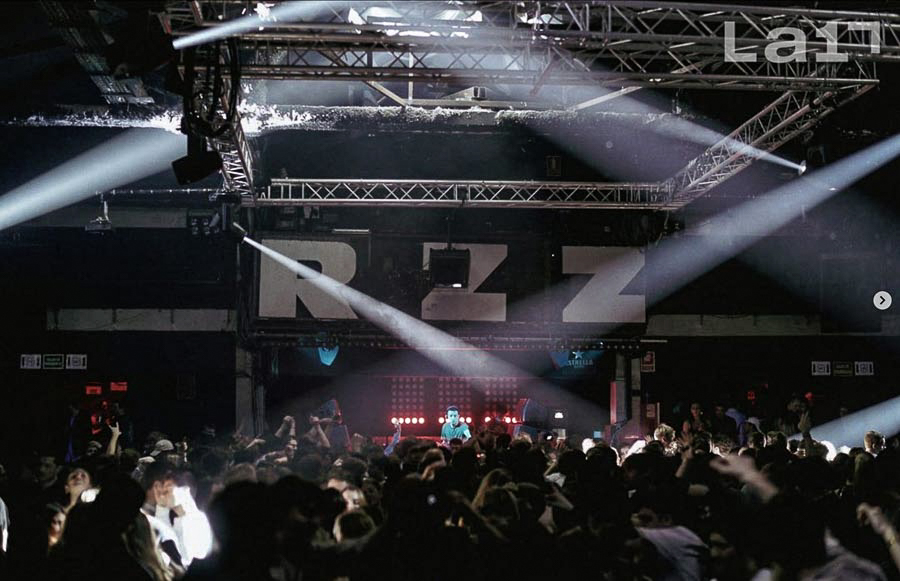
SLU : How do you change the speaker system, between a concert and clubbing?
Xavier Prats : There are two different installations possible. For our “club” sound, it’s a quadraphonic system using mainly five K3 on each side and two rear reinforcements using three K3s each, and it all balanced between the front and rear for dancing in the middle. For concerts, we stick to a left/right balance with the five K3s on each side of the stage. It is all enhanced with eight SB28 subs fitted under the stage, that are used in both setups.
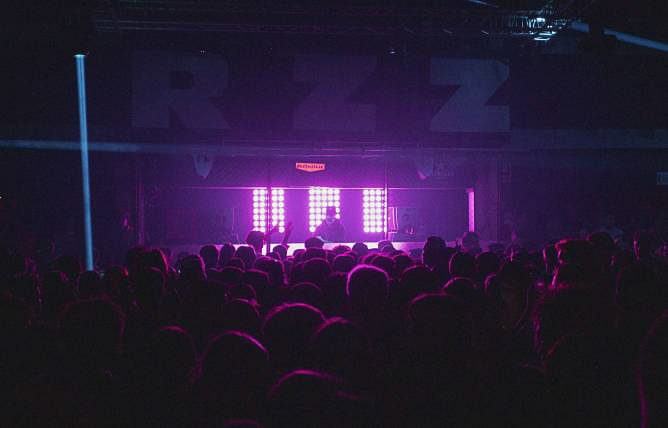
SLU : What is your policy when hosting events?
Xavier Prats : After the setup and system calibration, we have measured the output, and made specific adjustments for corporate events, concerts, and clubbing. When the touring technician arrives in the room, we show him the setup and presets, then allow them to make changes where needed. Some prefer to have the subs moved closer or to use a different front fill. It all depends on the type of band and their tastes. We offer a stage monitor system made up of 12 L-Acoustics X12 wedges for the entertainers.
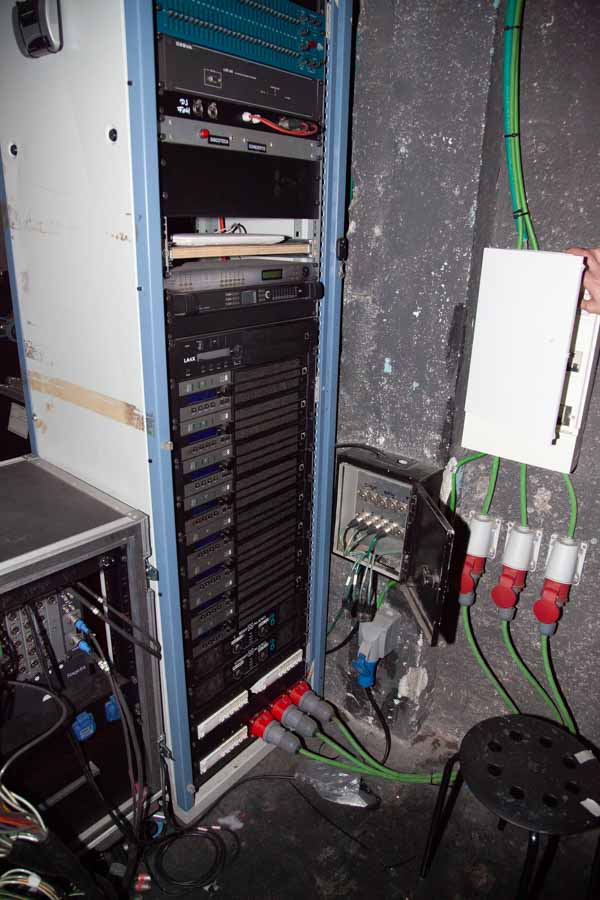
SLU : Who controls the overall sound level when hosting a DJ?
Xavier Prats : We are dealing with professionals, however, we talk with them before the show, and request they don’t go too much into the red zone to have the best sound possible for the audience.
We always have control of the output and have limiters at the sound desk. In general, the DJs are preoccupied with their mix and trust our judgment for the sound level. We have yet to encounter a problem with any of them. Until now.
We sometimes have some difficulty with requests for the equalization being quite powerful, however, nothing too difficult that a discussion doesn’t easily fix. We always want them to be comfortable with the sound, they sometimes want more or less subs.
Media
Adrian, video technical manager, gives us a tour of the “Sala 1” installation.
Adrian : We use Resolume, enabling the visuals to be more interactive and reactive to the sound. The video content changes depending on the type of event: Pop/Grunge on Saturdays or Electro/Techno in the Loft.
Xavier Prats : “In “Sala 1”, we have a Vivitech laser 20KD projector. It allows for multiple configurations like projecting behind the DJ or company logos on the floor for the corporate events.
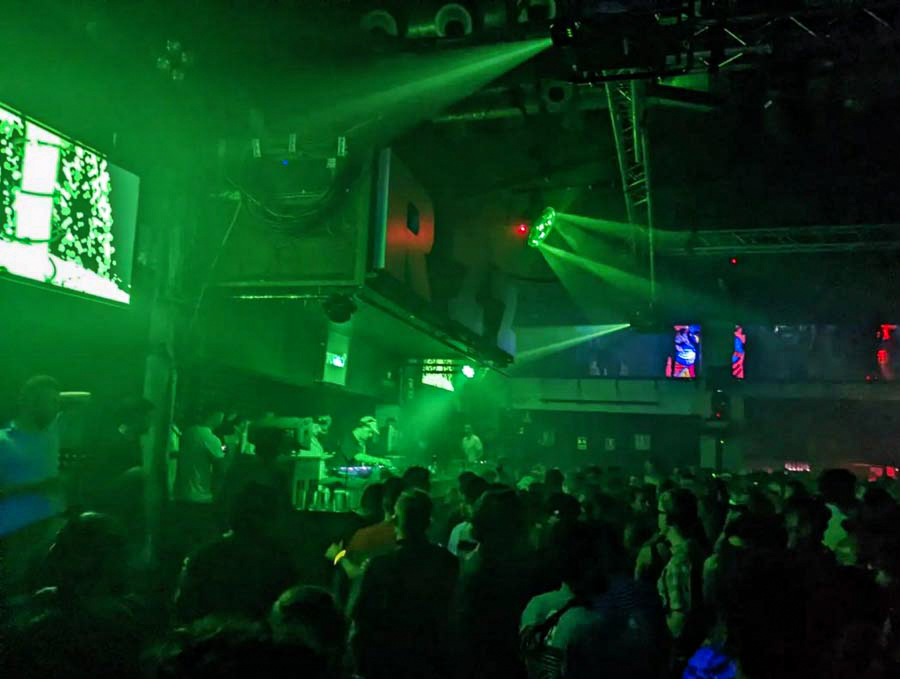
SLU : The video banks, are they created in-house?
Adrian : Yes we have a department dedicated to just that, using such software as Cinema 4D or After Effects.
Les effets
SLU : Do you use any special FX?
Xavier Prats : “Some CO2 launchers and confetti machines encompassing the dancefloor, supplied by Catalan company, Oh! Fx.
Magda Kozlowska : The control of our special FX is done by our in-house lighting crew. and it is in no way connected to the lighting desk, avoiding any human error. The CO2 jets are prepared to the liking of the performers and touring crew and activated at the correct predefined moment. It adds that “WOW” factor for the audience.
The Loft, the Lolita room, and the Sala 4 and 5
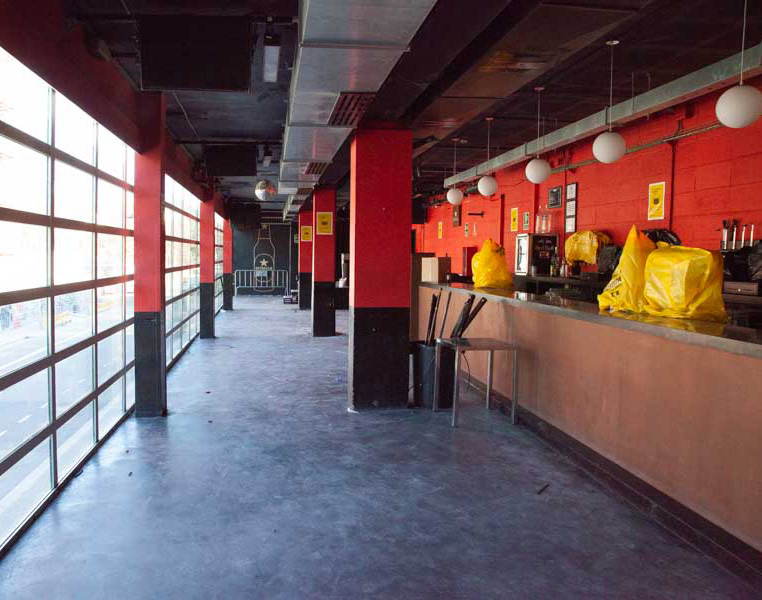
The Razzmatazz is divided into five sections. The largest room is “Sala 1”, flanked by “Sala 2” known also as the “Loft”, and the “Sala 3” called the “Lolita” are both of medium capacity. Two other smaller spaces, designed more like long bar-type rooms, are available for the event if needed.
There is brand new rider. The Loft, with a capacity of 940, is more berlin-techno style. It has a Kara L-Acoustics system including subs: five Karas on each side of the DJ setup with two delays in the center of the dancefloor to cover the sound reflection caused by the arched ceiling, as Xavj says “difficult to mix”. The system is controlled by a Midas Pro 2 at FOH and an SC48 Avid.
Depending on the entertainment we can install a proscenium into the room, and, if planned in advance, a big projection screen behind the DJ.
SLU : Do you often use rear-projection? Are led screens sometimes more suited?
Xavier Prats : Rear-projection pollutes the stage/dancefloor area less and also is easier to control ensuring a great quality of output. Not to forget it won’t cast unwanted shadows of the lighting gear on the arched ceiling.
The lighting kit is made up of 8 x Claypaky Axcor Led 300 Spots, 6 x Elation Razor Washes, 6 x SixPar Led200, 8 x Elation Proton 3K strobes very bright in white, and some SGM Q8 that have received positive votes from our entire crew…
The Sala 3, also called Lolita, has an L-Acoustics A15 system. Its 4-point PA system is used for clubbing whereas only the front points are used for a concert setup. The system is under the control of a Midas Pro 1.
Xavier Prats : In this room, we decided on MAC 250s by Martin, Chauvet Q-Spot 260 leds with 4 x Par56 for the front lighting and 20 x ParLed installed in the stage grid. Room capacity is 200 max. Two other rooms can be configured for clubbing or private events.
The Razzmatazz, the organization runs like clockwork
Having so much to offer is what has made the Razzmatazz successful. Its hosted world-renowned stars: David Byrne, Coldplay, Orbital, Pulp, The Strokes, Kanye West, Blur, Belle and Sebastian, Richie Hawtin, Jeff Mills, Kraftwerk, Paul Kalkbrenner, Justice, and Skrillex. And others that were lesser-known when they played here, such as the Arctic Monkeys, Franz Ferdinand, Cut Copy, and The Gossip.
Xavi is in constant contact with Jaoma, Magda et Adrian, three managers looking after sound, lighting, and video respectively. When a renovation is decided, they all meet with production to define which parts of the kit should be changed or moved to adapt to the entertainers’ needs and to keep up to date with the new technologies.
Xavier Prats : We function in the same way a big festival does. Once a month we meet with the Booking manager to draw up a list of the different scenic requests for the upcoming events. It might be a disco mirror ball for a disco event, or a “Dark” lighting mood with some strobes for a techno night.
Magda Kozlowska : And every Wednesday there is a meeting with the production and technical managers to discuss our plans in more detail for the following weekend. Each department sends an email with the installation, programming time, and eventual rentals requested by the technical touring crew and the performers’ needs.
SLU : How many are you in total?
Xavier Prats : We are roughly a hundred people, 40 of that is the technical crew, including free-lance technicians (i.e. Light Jockeys, editors note). With our wide variety of events, the venue may stay open for 24h in one stretch, so we need more staff to have two separate crews.
SLU : How does it work out with the light Jockeys?
Magda Kozlowska : There are two separate lighting crews for a concert, one for the load-in and setup and one for the show and loud-out. Since we know the tastes and strong points of each of our light jockeys we can book the one best suited for the event. We must regularly hire younger ones, approximately the same age as the clubbers with loads of energy to last all night.
In Spain and especially Barcelona there are more and more specialized schools. We can hire kids (early 20s of age) who have already obtained a good basic knowledge and would like to have some hands-on experience. In a “club” situation it’s less visible if there are some mistakes made, than in a concert.
Xavier Prats : We have a partnership with a public school specializing in sound, lighting, and video. During their school years, the students are required to do 3 to 4 months of apprenticeship. However, for our events with major performers, we always call-in a more experienced technician.
SLU : How is the after-sales service when a fixture or other goes (breaks) down?
Magda Kozlowska : We do monthly cleaning and maintenance, if there is something we can’t fix ourselves we prefer to contact directly the customer service department of the manufacturer. Lastly, we dry-hire whatever is needed, to respect the “Rider” we sent to the technical managers touring with the bands or other performers.
Xavier Prats : Our most faithful supplier is Light Lumina, they were with us when the nightclub was called the “Celeste” (editors note: this club was previous to the Razzmatazz). So…well it’s been 13 years of good service.
Magda Kozlowska : We have built a good relationship, and they are in our price range.
The Razzmatazz is ready to go for summer. Ready to get people dancing, and clubbing to our lighting rigs beats long into the night in one of Barcelona’s best nightclubs! Now that is a great plan. The team uses their combined knowledge and is always striving to make each event even better, with quicker get-ins and get-outs, perfectly maintained equipment, planning, etc…
At the top of their list is the experience for the audience or the clubbers, which has been essential to the reputation of the Razzmatazz, the hallmark of Catalan nightclubs.
Once the shipment of 12 Robe Tetra 2s has arrived, the last cornerstone of this premium kit, which is treasured by Magda, Jaoma, Adrian, and technical director Xavi Prat. We salute the energy and great synergy of this incredible crew.
After personally enjoying the Razzmatazz “experience”, a few years ago, I highly recommend this club, they know how to keep their shows an artistic and technical experience to remember.



